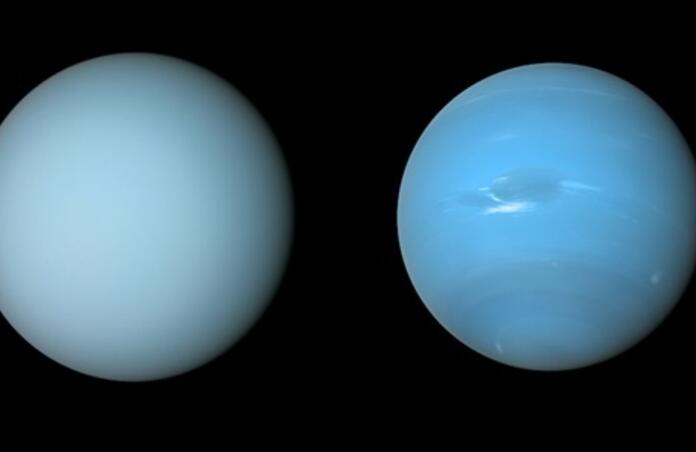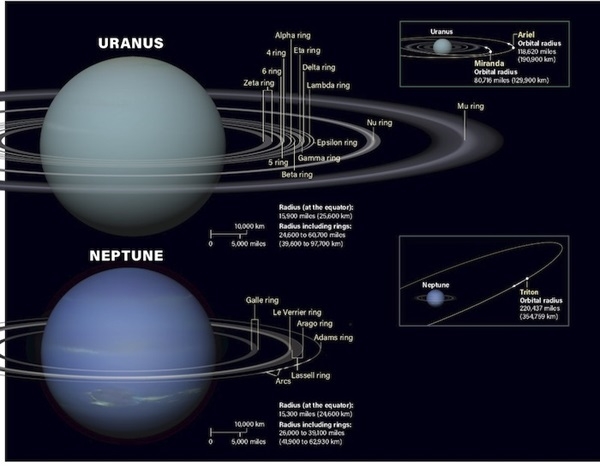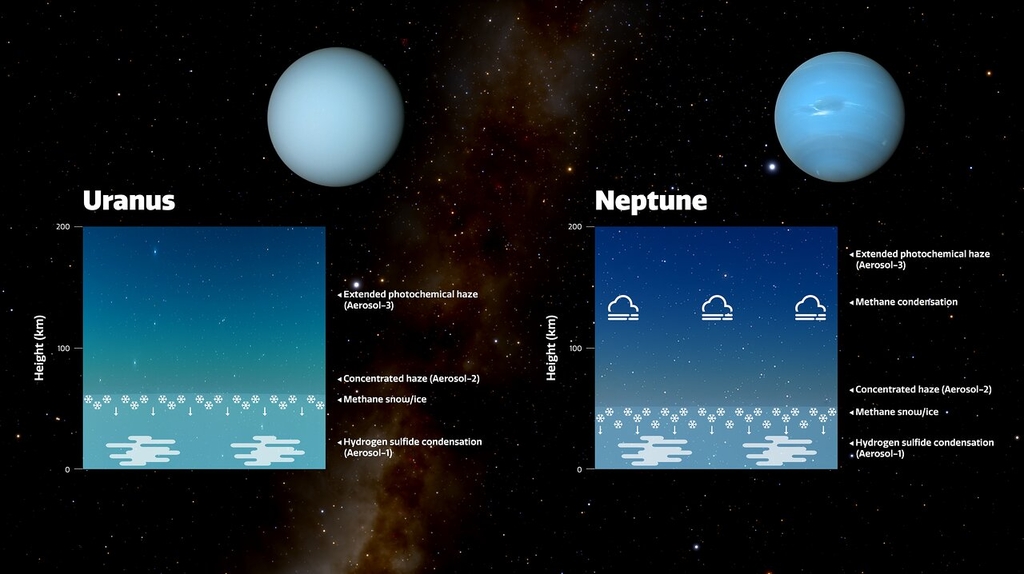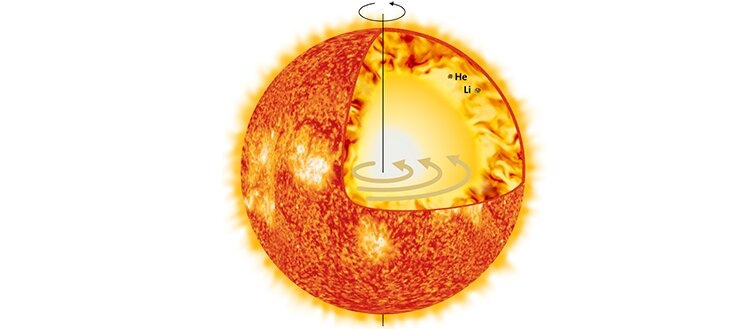The hazy and snowy blue worlds of our Solar System

Why is Uranus “cyan” and Neptune “azure” ?
Uranus and Neptune have roughly the same size (Uranus is only 1500 km larger than Neptune), the same mass (14 Earth masses for Uranus, 17 for Neptune) and the same composition (atmospheres are predominately hydrogen, helium, and methane, mantles are mostly water, ammonia, and again, methane). Despite this, their slightly different colours have been puzzling astronomers. The two ice giants haven't been visited since the Voyager missions in the 1980s, but have recently made it on NASA's priorities list and it is extremely likely that a probe to study Uranus will be launched during the 2030s, arriving at the planet sometime around 2044.

Anyway, with data across a wide range of wavelengths from the Hubble Space Telescope, the NASA Infrared Telescope Facility, and the Gemini North telescope, astronomers were able to devise a model that accounts for the colour difference. In this model, there are three layers of haze, containing aerosol particles (essentially, clouds). The middle layer is thicker on Uranus than on Neptune. Moreover, on both planets, methane ice condenses onto the aerosol particles in this layer, causing “methane snow”, however Neptune’s atmosphere is generally more turbulent, so that it is more efficient at forming this otherworldly snow. Equivalently, Neptune “gets rid of” this layer of haze more easily, giving it a deeper blue colour.

As a nice additional side-result, this model gives an explanation for the occasional dark spots that have been … spotted in the atmospheres of the two ice giants. The researchers demonstrate that the deepest layer, which is a mixture of hydrogen sulphide ice and particles produced by the interaction of the planets’ atmospheres with sunlight, is responsible for these. The darkening of spots in that layer could be caused by storms and other atmospheric currents, similarly to the Great Red Spot on Jupiter.
Another model presented this week revises our understanding of the Sun, specifically its chemical composition. By considering our star’s rotation and magnetic fields, the astronomers from the University of Geneva, Switzerland, and the University of Liège, Belgium, were able to predict the abundances of certain chemical elements more precisely than with the previous standard model. That simplified model worked reasonably well until the early 2000s, point at which solar astronomers obtained improved measurements of the abundance of chemical elements in the Sun and helioseismic measurements (much like with “terrestrial” seismology, measuring the oscillations). The latter allows to conclude about the Sun’s internal structure.

By adding the evolution of the Sun’s rotation and the magnetic instabilities that arise from it, a more consistent picture of the transport of elements inside the Sun emerges in the new model. Most importantly, the abundance of helium in the Sun’s outer layers was correctly prognosticated. Still, there are some challenges left. In particular, we know from helioseismology that the convective zone begins 199 500 km below the surface, and the model is 10 000 km off – this is better than past estimates from other theoretical models, but the difference with observations remains to be explained. Nevertheless, the updated model will now be used to re-evaluate the masses, radii and ages of solar-type stars, as this sort of analysis is typically done relative to the Sun. This, in turn, will have implications notably for our search for exoplanets.
A clearer view of ice giants and of Sun-type stars - two promising steps forward in understanding how stellar systems as a whole form and evolve.
Cover Image: Uranus and Neptune from Voyager 2 fly-by, NASA/JPL-Caltech/B. Jónsson
Image Credits:
1 - Uranus and Neptune Ring systems, R. Kelly
2 - Diagram of ice giants' atmospheres, International Gemini Observatory/NOIRLab/NSF/AURA, J. da Silva/NASA /JPL-Caltech /B. Jónsson
3 - Solar model, S. Ekström / UNIGE
